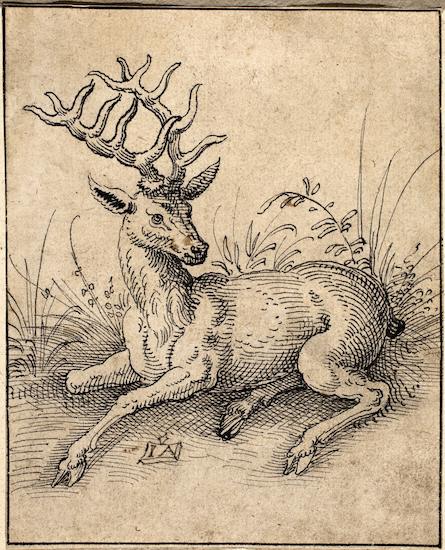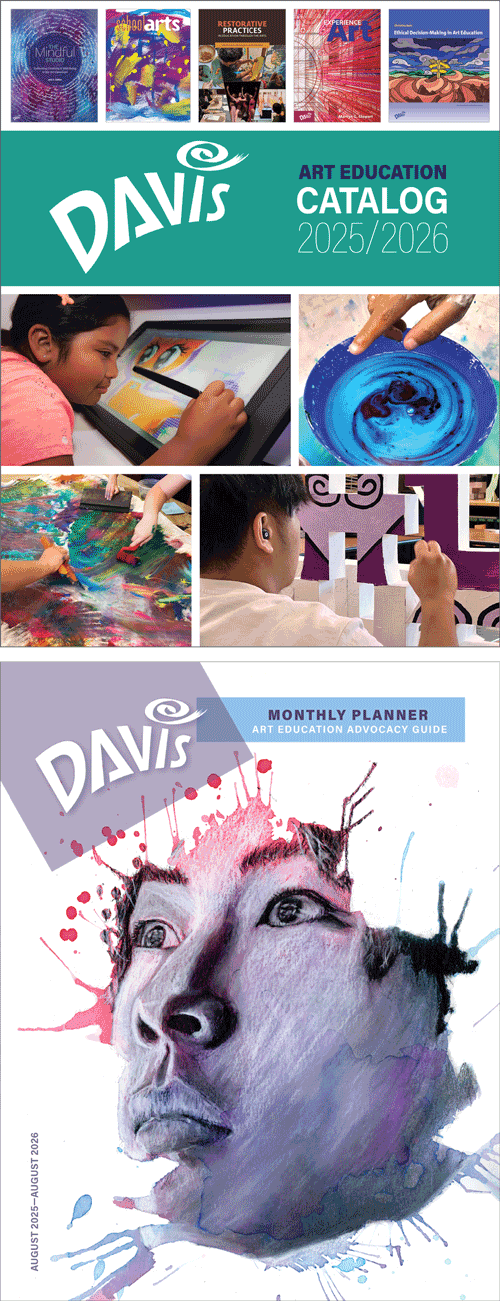Artist Birthday: Jost Amman
Like the German Renaissance, the Swiss Renaissance witnessed the flourishing of all the graphic arts, which included woodcut, engraving, etching, and drawing. One of the rich characteristics of German and Swiss graphic arts is the sophisticated use of hatching and cross-hatching to define volumetric form.
Artist Birthday for 13 June: Jost Amman (1539–1591, Switzerland)
Jost Amman, a Swiss Renaissance artist, was a brilliant printmaker and draughtsman whose career included illustrating many books with his engravings.
 |
| Jost Amman, The Stag, possibly a study for a woodcut in the series Figures from the Hunt and Game Management (1582) . Ink on paper, 10.9 x 9.1 cm. © 2025 National Gallery of Art, Washington, DC. (NGA-P1238) |
Besides being an illustrator, Amman was a prolific draftsperson. He produced studies of every conceivable subject. His animal studies are remarkably similar to those of Dürer. While based on direct observation, they maintain the lyrical naïveté that is so common in the animal drawings of late Gothic German and Swiss art. The use of hatching and cross-hatching to build form reflects the practice in engraving and woodcut. In the last thirty years of Amman’s life, his output gradually shifted from woodcuts to engravings. This image of a stag may have come from the series of woodcuts called Figuren Von Iag und Weidtwerck (modern German Jagd and Weidwerk ("hunting" and "game management").
Because Switzerland is a small country, ringed in by mountains, and due to its proximity to the major European powers of Germany, Austria, France, and Italy, it never established a royal court or princely courts that acted as magnets for the development of art schools. Swiss artists were trained in the predominant styles of foreign courts such as those in Flanders during the 1400s and Germany starting in the 1500s. The humanist and scientific inquiry that was prevalent in Italian art only peripherally affected Swiss artists, particularly after the Protestant Reformation largely ended religious subject matter as a major source of income for artists.
After the Reformation took hold in Switzerland, painting was reduced primarily to portraiture and took second place to printmaking as a major art form. Printmaking, which was a dominant art form in Germany even before the Reformation, became a significant medium for Swiss artists after the Reformation. It was made particularly strong when the invention of moveable type in the 1490s facilitated the mass-production of books, which were often illustrated with woodcut prints. The 1500s witnessed a growth in the number of illustrated pamphlets and woodcut and engraving series on a variety of subjects, including science.
Amman was born in Zürich. The son of a professor, he was educated in the Renaissance humanism of the day. He probably was apprenticed in Zürich or Basel, but certainly studied in Paris or Lyon. In Basel — the printmaking capital of Switzerland — he likely studied the woodcut prints of the master printmaker of the Swiss Renaissance, Urs Graf (1485–1529). By 1561, he had moved to Nuremberg, the hometown of High Renaissance master printmaker Albrecht Dürer (1471–1528), by whose woodcuts and engravings he was undoubtedly influenced.
Correlations to Davis programs: Experience Art: Unit 4 Nature, 4.2 — Approaches to Artmaking, Observing and Drawing for Understanding, Looking Closely

Comments